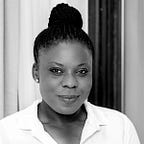Black in Architecture® BLM
Background
Initiating #BlackinArchitecture #BLM
Black in Architecture® research was founded by Juliet Sakyi-Ansah as a summer project in 2020 and as part of The Architects’ Project. Juliet used the hashtag #BlackinArchitecture on Twitter platform following the killing of George Floyd and the Black Lives Matter protests of the that summer to invite people to share their experiences. The hashtag and the idea of learning from other people’s experiences was inspired by other #BlackInX movements, particularly #BlackintheIvory.
One year on, and with a more carefully considered longer-term programme, the initiative hopes to work directly with people, groups and organisations using ‘bottom up’ approaches. The vision is to directly influence change at decision-making level by creating the conditions and nurturing spaces for our voices to be heard, and for the education, practice, and other areas in architecture to open up for Black and Black British people. The initiative also intends to actively use shared learning practices to include the voices and experiences of all minority groups who are experiencing and navigating systemic racism in architecture.
Black in Architecture research is run as a /tap Collective project. /tap Collective is a collaborative research, design and development practice themed around The Architects’ Project.
We reference the ARB’s ethnicity breakdown for the term Black or Black British. The focus on Black and Black British people is owed to the Founder and Researcher of Black in Architecture identifying as Black British herself. She is an expert of her own experiences and not an expert on race. Her work is driven by her curiosity and motivation to help build better and fairer communities.
Archive: from the old website to Medium publication
We have moved from the old website to Medium platform to help with managing resources and to keeping up with updates. The blog format will hopefully help to keep a narrative of the work. It will also be a way for us to build a research community on the topic of race in architecture. The images below were captured from the previous website.
